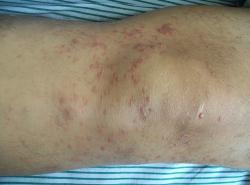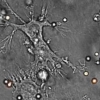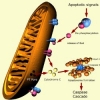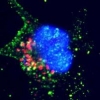Gli antistaminici clemastina e desloratadina inibiscono le attività di STAT3 e c-Myc e inducono l'apoptosi nelle linee cellulari di linfoma cutaneo a cellule T
 La micosi fungoide e la sua controparte leucemica, la sindrome di Sézary, sono i più frequenti linfomi cutanei a cellule T (CTCL) e non esiste ancora una cura per queste malattie. Abbiamo valutato l'effetto degli antistaminici clinicamente approvati sulla crescita delle linee cellulari CTCL. Pertanto, le linee cellulari di CTCL e i linfociti del sangue di pazienti con sindrome di Sézary sono stati coltivati con antistaminici e tutte le cellule sono state analizzate dal punto di vista della proliferazione, dell'apoptosi e dell'espressione di molecole di morte programmata e di fattori di trascrizione.
La micosi fungoide e la sua controparte leucemica, la sindrome di Sézary, sono i più frequenti linfomi cutanei a cellule T (CTCL) e non esiste ancora una cura per queste malattie. Abbiamo valutato l'effetto degli antistaminici clinicamente approvati sulla crescita delle linee cellulari CTCL. Pertanto, le linee cellulari di CTCL e i linfociti del sangue di pazienti con sindrome di Sézary sono stati coltivati con antistaminici e tutte le cellule sono state analizzate dal punto di vista della proliferazione, dell'apoptosi e dell'espressione di molecole di morte programmata e di fattori di trascrizione.
I due antistaminici, la clemastina e la desloratadina — attualmente utilizzati per alleviare i sintomi dell'allergia — hanno indotto una potente riduzione delle attività dei fattori di trascrizione costitutivamente attivi come c-Myc, STAT3, STAT5a e STAT5b nelle linee cellulari della micosi fungoide e della sindrome di Sézary. Questa inibizione è stata seguita da apoptosi e morte cellulare, specialmente per la linea cellulare Hut78 derivata dalla sindrome di Sézary che ha anche mostrato un'espressione aumentata della proteina di morte programmata-1 (PD-1) dopo il trattamento con clemastina.
Nei linfociti isolati da pazienti affetti da sindrome di Sézary, la frazione di linfociti CD4-positivi sono andati incontro ad apoptosi dopo il trattamento con clemastina, mentre i linfociti CD4-negativi ne sono stati poco influenzati. Poiché sia c-Myc che i fattori di trascrizione STAT sono altamente espressi nei tumori proliferanti, la loro inibizione da parte della clemastina, della desloratadina e di altri inibitori potrebbe integrare le chemioterapie attuali, non solo per i linfomi cutanei a cellule T ma forse anche per altri tipi di cancro.
Storia della pubblicazione:
Titolo: The antihistamines clemastine and desloratadine inhibit STAT3 and c-Myc activities and induce apoptosis in cutaneous T-cell lymphoma cell lines
Rivista: Experimental Dermatology. doi: 10.1111/exd.12086
Autori: Udo Döbbeling, Ying Waeckerle-Men, Franziska Zabel, Nicole Graf, Thomas M. Kündig, Pål Johansen
Affiliazioni:Department of Dermatology, University Hospital Zurich, Zurich, Switzerland Center for Clinical Research, University of Zurich, Zurich, Switzerland
Abstract:
Mycosis fungoides and its leukemic counterpart Sézary syndrome are the most frequent cutaneous T-cell lymphomas (CTCL), and there is no cure for these diseases. We evaluated the effect of clinically approved antihistamines on the growth of CTCL cell lines. CTCL cell lines as wells as blood lymphocytes from patients with Sézary syndrome were cultured with antihistamines and the cell were analysed for proliferation, apoptosis and expression of programmed death molecules and transcription factors. The two antihistamines clemastine and desloratadine, currently used for symptom alleviation in allergy, induced potent reduction of the activities of the constitutively active transcription factors c-Myc, STAT3, STAT5a and STAT5b in mycosis fungoides and Sézary syndrome cell lines. This inhibition was followed by apoptosis and cell death, especially in the Sézary syndrome-derived cell line Hut78 that also showed increased expression of the programmed death-1 (PD-1) after clemastine treatment. In lymphocytes isolated from Sézary syndrome patients, the CD4-positive fraction underwent apoptosis after clemastine treatment, while CD4-negative lymphocytes were little affected. Since both c-Myc and STAT transcription factors are highly expressed in proliferating tumours, their inhibition by clemastine, desloratadine and other inhibitors could complement established chemotherapies not only for cutaneous T-cell lymphomas but perhaps also other cancers.
https://www.youtube.com/@djfdm





